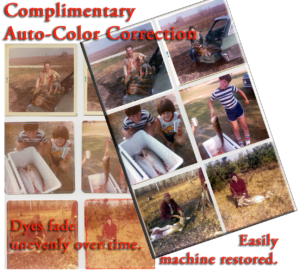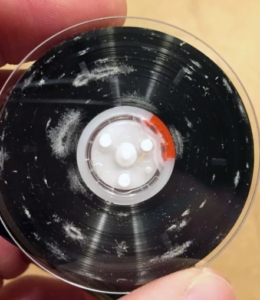Prospective clients often think that their films of 5 and 6 and 7 decades vintage might have aged beyond any ability to duplicate to digital. The easy answer to that mode of thinking is, "Uh, I don't think so." As long as you don't smell a scent of strong vinegar on your films, you are pretty much ... Read More »
Techniques and Practices
Fluid Motion from A Stills Series–Movies
The concept of motion pictures can be dated even before the invention of silver imaging otherwise known as photography. In 1832, drawings were mounted on the face of a twirling disc called a phenakistoscope. Thus, mankind was treated to the illusion of motion. When we compare the illusion of the ... Read More »
Resolution Comparison ADVC G-1 with Blackmagic Analog to SDI Converters
Let's take a simple look at two video analog to digital converters. On the one side we have the Grass Valley ADVC G-1 which accepts virtually any video signal in. On the other side of the ring we have the Blackmagic Design mini Converter - Analog to SDI. Both de-interlace in real time producing ... Read More »
Complimentary Color-Correction Scanned Media
The clock turns forward and can not be stopped. Time raveges not only our bones and being but the physical representation of our memories as well. Some media is more resilient to the ravages of time than others. For example, Kodachrome film dyes fade at an even rate so that there is little to no ... Read More »
Sticky Shed Syndrome
WHAT IS STICKY SHED SYNDROME, ANYHOW? Sticky Shed Syndrome (SSS) took the magnetic recording industry by surprise when first encountered in the early 1980s. It was never an issue until tapes were being brought out of storage and refused to play reliably without breaking. SSS in many cases ... Read More »
A Major “Recap” on a Magnificent Machine
WHAT IS A "RECAP," ANYHOW? In this blog post we outline in detail a "recap" operation performed on an otherwise perfectly operational quadraphonic reel-to-reel tape deck. WHAT'S A RECAP ALL ABOUT? The very nature of our business at W. Cardone Productions is with legacy media equipment that has ... Read More »






